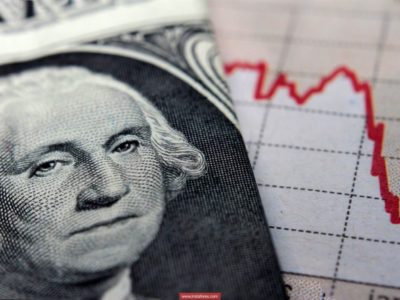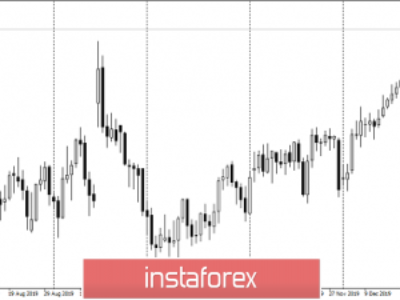USD refuses to soften
Many are asking why the USD is continuing to rise against its trading partners despite strong evidence being seen yesterday that economic momentum is slowing down, easing pressure on the Federal Reserve to begin raising US interest rates.
This is due to the sharp contrast in economic sentiment and monetary policy between the US Federal Reserve and everywhere else, that it is repeatedly pushing the USD higher against its trading partners. 2015 was supposed to be the year that central banks commenced a cycle where they would begin normalising monetary policy, but the unexpected decline in the price of oil has led to many economies facing unexpected inflation risks, resulting in a variety of central banks across the globe easing monetary policy further. This is where the divergence in monetary policy is directly confronting traders, with the only result being the USD pushing itself higher.
Will there be a USD correction? It’s highly doubtful while optimism remains high following various repeated comments of commitment from the Federal Reserve that it will be raising US interest rates this year, and it will probably require a poor reaction to this Friday’s NFP report to push back those expectations to the closing months of this year. There are emerging signals from the FOMC that it is monitoring “international developments elsewhere” since there is some clear evidence that such a highly-valued USD is hurting US exporters. The prospect of lower GDP growth would pressure the Dollar, but the USD uptrend appears completely supported as long as the expectations are still present for the Fed to begin raising rates.
The USDCHF has reached its highest level at 0.9614 since the unexpected shock from the Swiss National Bank (SNB) in January, despite Switzerland’s GDP for the last quarter of 2014 being announced as much stronger than expected. This is because traders are already looking forward towards the increasing eventuality that GDP data for the first half of 2015 is going to be adversely impacted by the stronger CHF. The comments from SNB President Thomas Jordan that the CHF was “clearly overvalued” have also heightened expectations for the SNB to ease monetary policy further in the coming months.
The GBPUSD has slipped for the second successive day, after once again ignoring further evidence that the UK economy has commenced the year on solid footing. The UK Construction PMI was announced at a four-month high moments ago, following a trend noticed yesterday when the Manufacturing PMI was confirmed at a seven-month high. Tomorrow sees the UK Services PMI announced, which is a major contributor to the UK economy and if this also impresses beyond expectations, we are looking at the UK scoring two hat-tricks of monthly PMIs in a row. Why are GBPUSD traders ignoring the strong data? The UK election is now just two months away and after the unforeseen volatility experienced over the Scottish Referendum last September, traders are hesitant to purchase the currency with potential political uncertainty on the horizon.
The EURUSD is also looking south, with the major currency pair presently at risk to register a new six-week low below 1.1159. There is some increased optimism over some economic data coming in better than expected over recent days, but this is not going to conclude the EURUSD downtrend. Granted, there is some room for cheer due to the pleasant surprise to the upside when the Eurozone unemployment rate fell to its lowest level in over two years. There is also optimism that a combination of the weaker currency and lower oil prices is supporting confidence in the Eurozone.
However, this does not erase concerns that the EU economy is caught between a dangerous game [a rock and a hard place] where it is confronted by issues such as stagnant economic growth and dangerously low inflation. ECB President Mario Draghi is likely to unveil further details regarding the QE program this Thursday in Cyprus following the ECB interest rate decision, while also reiterating that the economic outlook for Europe remains weak. When speaking of a divergence of economic sentiment and monetary policy between central banks, none stand out further than the fortunes of Europe and the United States with this resulting in complete one-way traffic for the EURUSD that has declined from 1.39 to 1.10. Aside from the downfall in oil prices providing its own economic stimulus through eased budgets, the main signs of optimism for Europe is that the German economy has passed through its unexpected period of turbulence from the second half of last year.
The AUDUSD has rallied to 0.7840 after the Reserve Bank of Australia (RBA) left interest rates unchanged, which makes me further question exactly why the RBA jumped the gun by reducing interest rates last month. The RBA spent the better part of three quarters of last year repeatedly calling for a weaker currency, with its wish finally granted after the AUDUSD declined from 0.93 last September. This decline was led by concerns over the Australian economic outlook weakening and it did appear that the AUDUSD was set to sink to the low 70’s through these concerns alone. In my view, the RBA tried to accelerate the AUDUSD decline by reducing interest rates which resulted in short options being squeezed. There is now going to be pressure on the RBA to continue easing policy, otherwise the AUDUSD will continue to consolidate.
Follow Jameel on Twitter @Jameel_FXTM
For more information please visit: Forex Time
NOTES TO EDITORS
FXTM is an international forex broker which provides access to the global currency market and offers trading in forex, precious metals, Share CFDs, ETF CFDs and CFDs on Commodity Futures. Trading is available via the MT4 and MT5 platforms with spreads starting from just 0.5 on Standard trading accounts and from 0.1 on ECN trading accounts. Bespoke trading support and services are provided based on each client’s needs and ambitions – from novices, to experienced traders and institutional investors. ForexTime Limited is regulated by the Cyprus Securities and Exchange Commission (CySEC), with licence number 185/12 and FT Global Limited is regulated by the International Financial Services Commission (IFSC) with license numbers IFSC/60/345/TS/14 and IFSC/60/345/APM/14.
The post USD refuses to soften appeared first on Forex Circles.
Source:: USD refuses to soften










